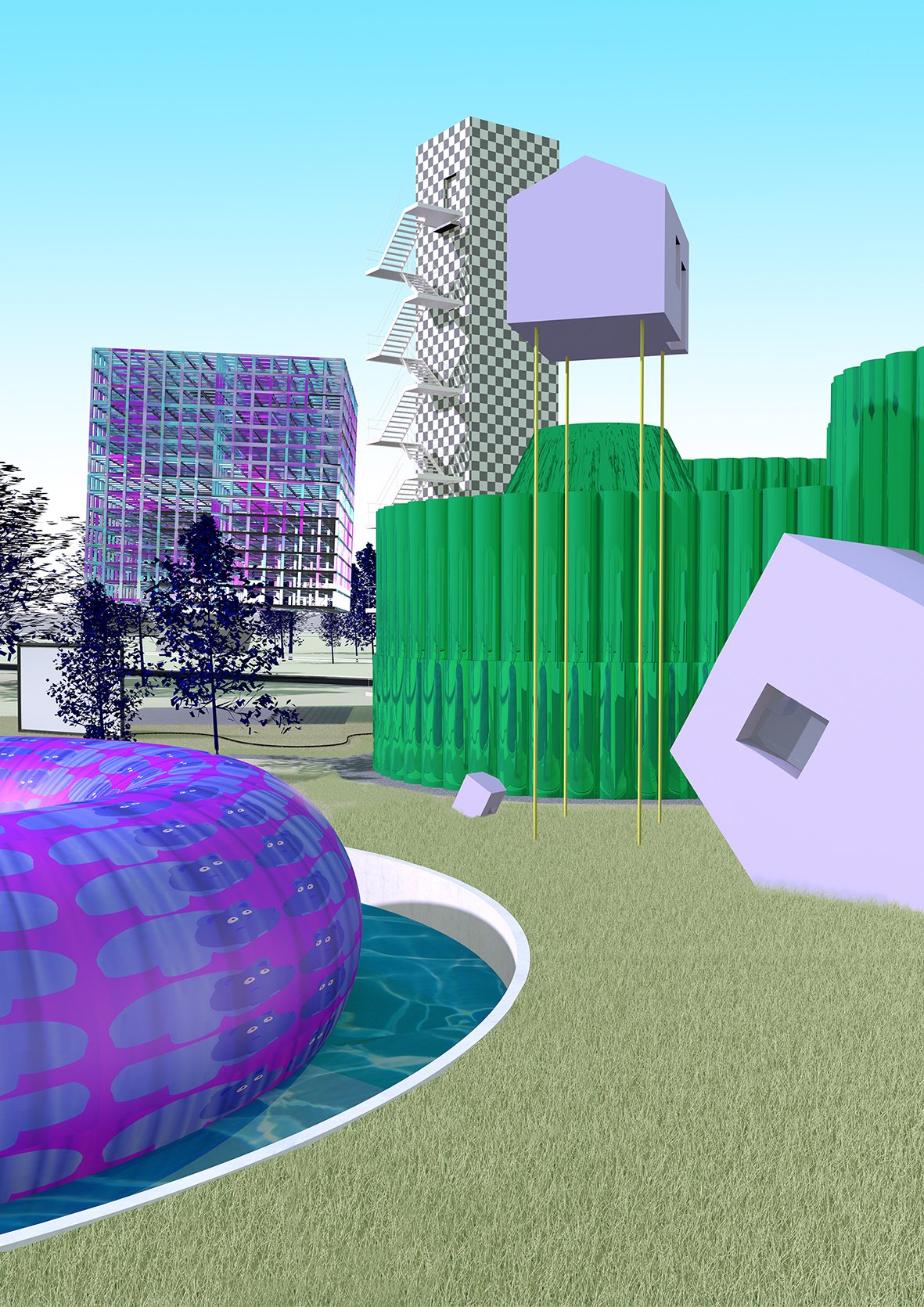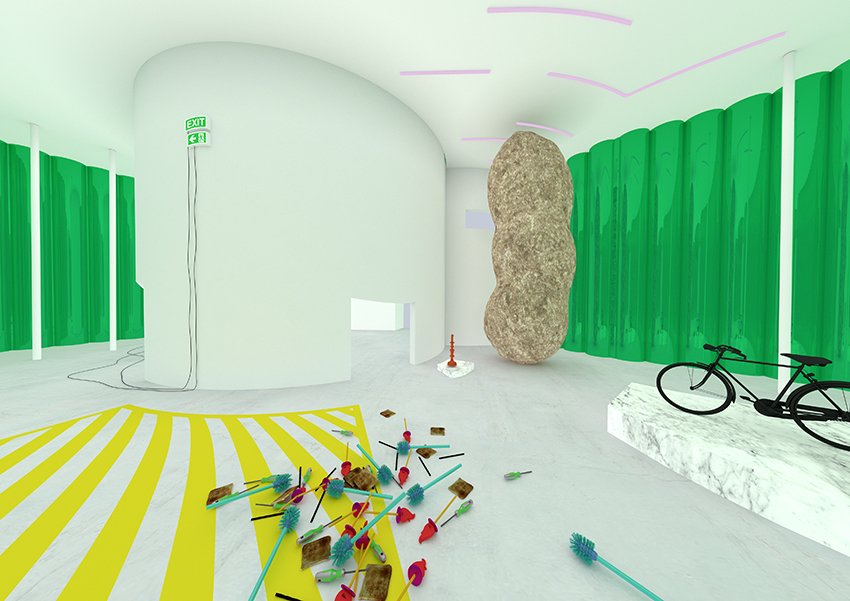
‘The London Institute of 'Pataphysics’ by Carolyn Kirschner
MA Architecture (2015 - 2017)
Royal College of Art, London
Key supervisors: Tom Greenall & Nicola Koller
keywords: simulation, urban design, technology, digital, science, pseudoscience, BIM, singularity, optimisation, chaos
Digital simulations of reality are multiplying: in films, disaster planning, job trainings, and architectural practice. They are a chance to practice or make predictions, optimize reality or make it more exciting. Ultimately, the aim is for simulations to be so realistic that they are indistinguishable from the real world. This point, where reality and simulation will one day converge, is termed the simulation singularity.
The London Institute of ‘Pataphysics is a speculative architecture project that explores the social consequences of this trajectory, and resulting knock-on effects on the built environment. It examines two ideological factions in parallel: the pursuit of reassuring predictability, afforded by simulated test-runs of reality, pitted against a growing desire for chaos and unpredictability.
In architecture practice today, BIM technologies are hailed as the software of the future. A building’s design development, construction process, and whole life-span now undergoes a simulated trial run. Rationalization, efficiency, and predictability have become the key qualifiers of many architectural proposals. Meanwhile, the kit-of-parts design method promoted by BIM technologies has given software programmers the power to influence tastes and styles in the real world. The built environment is already irreversibly altered by the tools and conditions of digital space.
Through the lens of ‘Pataphysics, the project speculates on inevitable reactions and counter-reactions to this escalating rationality. ‘Pataphysics is the science of nonsense. It argues that physical laws, which imply relationships of cause and effect and predictability, don’t exist. Instead, everything is exceptional, with some exceptions simply happening more often than others. The College de ‘Pataphysique was founded in 1948 in Paris, by the fictional Dr. Faustroll. Similar institutes and organizations exist around the world, which all celebrate uselessness as a positive antidote to an era of utility.
Following the simulation singularity in 2050, the project predicts a surge in followers—leaving the London Institute of ‘Pataphysics in need of physical headquarters, to not only house its various departments and associated functions, but also aesthetically undermine the architectural developments in its immediate surroundings—a hyper-rational version of London, a caricature of itself. The institute’s departments include the Bureau for the Investigation of Subliminal Images, Committee for Hirsutism and Pogonotrophy, Department of Dogma and Theory, Department of Potassons, Department of Reconstructive Archaeology, and The Office of Patentry. The institute also houses a museum which uses simulation, rather inconveniently, as a curation tool. Its contents feature a peanut enlarger and a giant peanut, as well as an extensive wand collection—including the Golden Dawn Fire wand, tickling sticks, and a Toast wand.
Through the mis-use and re-appropriation of simulation tools, the project sets out to develop a ‘pataphysical approach to architecture. It grapples with questions of chaos and order, chance and predictability. The unhinged aesthetic that emerges at once encapsulates the unsettling beliefs and value systems of its followers and hints at the untapped creative potentials of digital technologies. The London Institute of ‘Pataphysics absolves simulation of its responsibility as test-bed for reality, in turn allowing it—in its unworldliness—to stake its own claim to reality.
Carolyn Kirschner / MA Architecture / RCA / 2015-17
Carolyn is a designer and researcher with a background in architecture. She currently holds teaching positions at Goldsmiths University and Parsons School of Design. Until recently, she was based in New York, where she worked with Dunne & Raby as part of their Designed Realities Studio.







